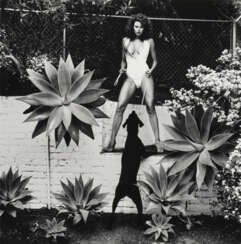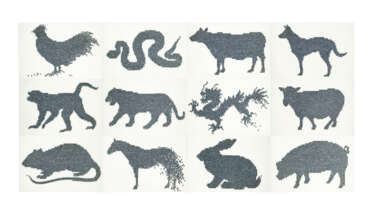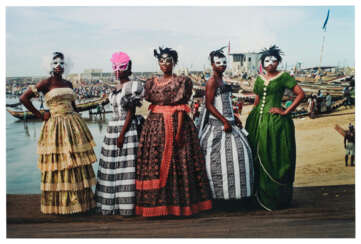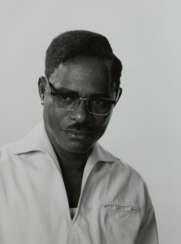photographie numérique

Vik Muniz is a Brazilian artist and photographer. Initially a sculptor, Muniz grew interested with the photographic representations of his work, eventually focusing completely on photography. Primarily working with unconventional materials such as tomato sauce, diamonds, magazine clippings, chocolate syrup, dust, dirt, etc., Muniz creates works of art, referencing old master's paintings and celebrity portraits, among other things, and then photographs them. His work has been met with both commercial success and critical acclaim, and has been exhibited worldwide. He is currently represented by Galeria Nara Roesler based in New York and Brazil.


Vik Muniz is a Brazilian artist and photographer. Initially a sculptor, Muniz grew interested with the photographic representations of his work, eventually focusing completely on photography. Primarily working with unconventional materials such as tomato sauce, diamonds, magazine clippings, chocolate syrup, dust, dirt, etc., Muniz creates works of art, referencing old master's paintings and celebrity portraits, among other things, and then photographs them. His work has been met with both commercial success and critical acclaim, and has been exhibited worldwide. He is currently represented by Galeria Nara Roesler based in New York and Brazil.

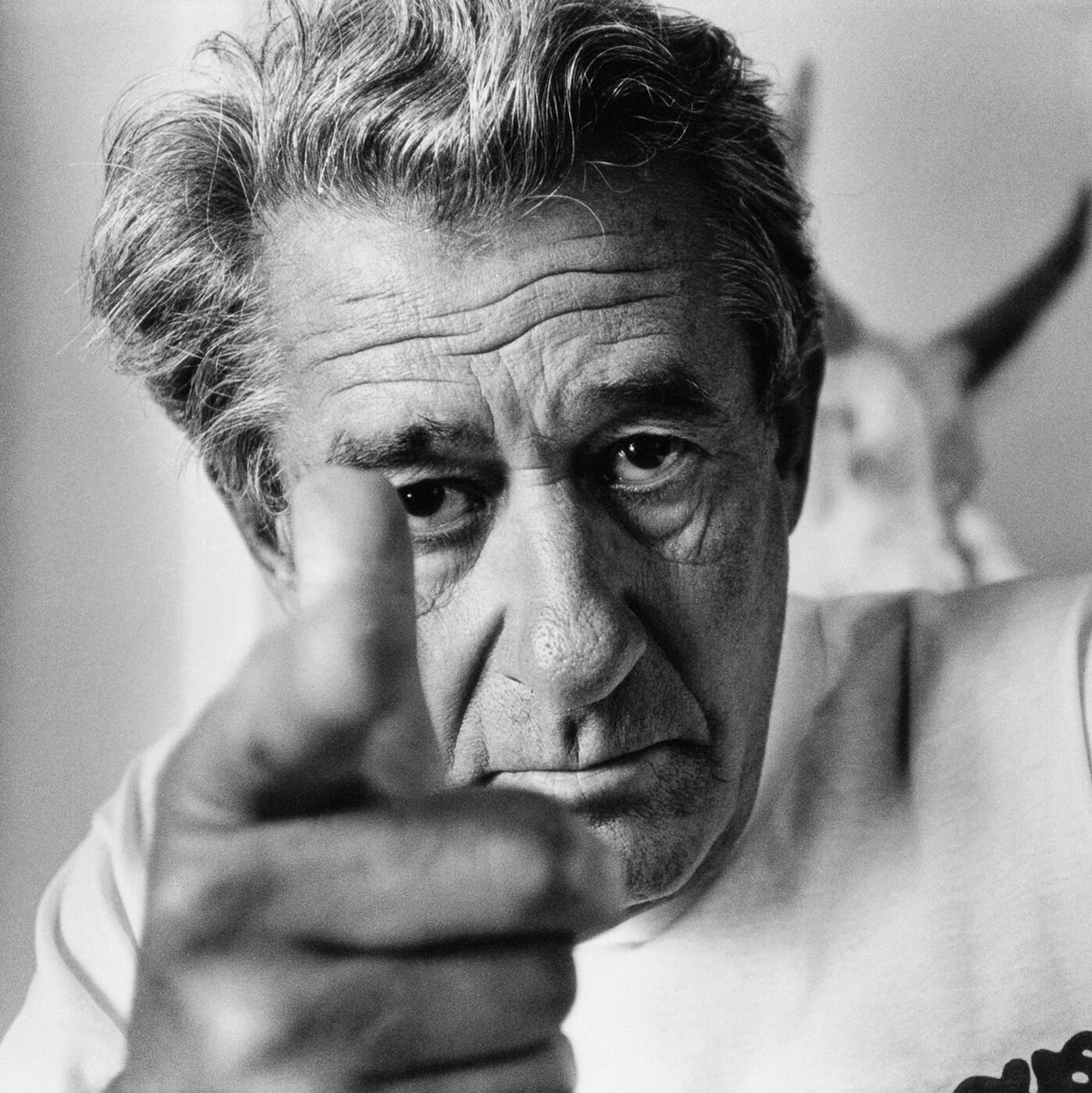
Helmut Newton (born Helmut Neustädter) was a German-Australian photographer. The New York Times described him as a "prolific, widely imitated fashion photographer whose provocative, erotically charged black-and-white photos were a mainstay of Vogue and other publications."


Irving Penn was an American photographer celebrated for his influential work in fashion photography, portraits, and still lifes. Penn's journey into photography began with a background in painting and design, studying at the Philadelphia Museum School of Industrial Art. He moved to New York and initially worked in design and illustration, which paved the way for his transition into photography. Notably, Penn's work at Vogue magazine for over six decades helped define the visual style of mid-20th-century fashion photography.
Irving Penn's mastery extended beyond the camera to the darkroom, where he experimented with various printing techniques, including the platinum-palladium process, which contributed to the depth and subtlety of his prints. His works, such as the "Cigarette" series and his still life compositions, are renowned for their minimalistic elegance and meticulous detail. Irving Penn's artistry was not confined to one genre; his "Earthly Bodies" nudes series and street material collection demonstrated his versatility and depth as an artist.
His contributions to photography are preserved and celebrated in numerous exhibitions and collections worldwide, including major museums like The Metropolitan Museum of Art, The Museum of Modern Art, and The Art Institute of Chicago. Irving Penn's legacy as a pioneering figure in photography continues to inspire artists and photographers today.
If you're a collector or an expert in art and antiques, staying updated on Irving Penn's works can be invaluable. To receive updates on new product sales and auction events related to Irving Penn, consider signing up for our newsletter. This way, you won't miss out on the opportunity to own a piece of photographic history.


Irving Penn was an American photographer celebrated for his influential work in fashion photography, portraits, and still lifes. Penn's journey into photography began with a background in painting and design, studying at the Philadelphia Museum School of Industrial Art. He moved to New York and initially worked in design and illustration, which paved the way for his transition into photography. Notably, Penn's work at Vogue magazine for over six decades helped define the visual style of mid-20th-century fashion photography.
Irving Penn's mastery extended beyond the camera to the darkroom, where he experimented with various printing techniques, including the platinum-palladium process, which contributed to the depth and subtlety of his prints. His works, such as the "Cigarette" series and his still life compositions, are renowned for their minimalistic elegance and meticulous detail. Irving Penn's artistry was not confined to one genre; his "Earthly Bodies" nudes series and street material collection demonstrated his versatility and depth as an artist.
His contributions to photography are preserved and celebrated in numerous exhibitions and collections worldwide, including major museums like The Metropolitan Museum of Art, The Museum of Modern Art, and The Art Institute of Chicago. Irving Penn's legacy as a pioneering figure in photography continues to inspire artists and photographers today.
If you're a collector or an expert in art and antiques, staying updated on Irving Penn's works can be invaluable. To receive updates on new product sales and auction events related to Irving Penn, consider signing up for our newsletter. This way, you won't miss out on the opportunity to own a piece of photographic history.


Zanele Muholi is a South African photographer and LGBT activist.
She works in the fields of photography, video and installation. Muholi's work focuses on race, gender and sexuality, with the bulk of her work documenting and celebrating the lives of black lesbians, gays, transgender and intersex people in South Africa.


Helene Bertha Amalie "Leni" Riefenstahl was a German film director, photographer and actress known for her role in producing Nazi propaganda.
A talented swimmer and an artist, Riefenstahl also became interested in dancing during her childhood, taking lessons and performing across Europe. After seeing a promotional poster for the 1924 film Mountain of Destiny, she was inspired to move into acting and between 1925 and 1929 starred in five successful motion pictures. Riefenstahl became one of the few women in Germany to direct a film during the Weimar Period when, in 1932, she decided to try directing with her own film, Das Blaue Licht ("The Blue Light").


Helene Bertha Amalie "Leni" Riefenstahl was a German film director, photographer and actress known for her role in producing Nazi propaganda.
A talented swimmer and an artist, Riefenstahl also became interested in dancing during her childhood, taking lessons and performing across Europe. After seeing a promotional poster for the 1924 film Mountain of Destiny, she was inspired to move into acting and between 1925 and 1929 starred in five successful motion pictures. Riefenstahl became one of the few women in Germany to direct a film during the Weimar Period when, in 1932, she decided to try directing with her own film, Das Blaue Licht ("The Blue Light").


Helene Bertha Amalie "Leni" Riefenstahl was a German film director, photographer and actress known for her role in producing Nazi propaganda.
A talented swimmer and an artist, Riefenstahl also became interested in dancing during her childhood, taking lessons and performing across Europe. After seeing a promotional poster for the 1924 film Mountain of Destiny, she was inspired to move into acting and between 1925 and 1929 starred in five successful motion pictures. Riefenstahl became one of the few women in Germany to direct a film during the Weimar Period when, in 1932, she decided to try directing with her own film, Das Blaue Licht ("The Blue Light").


Helene Bertha Amalie "Leni" Riefenstahl was a German film director, photographer and actress known for her role in producing Nazi propaganda.
A talented swimmer and an artist, Riefenstahl also became interested in dancing during her childhood, taking lessons and performing across Europe. After seeing a promotional poster for the 1924 film Mountain of Destiny, she was inspired to move into acting and between 1925 and 1929 starred in five successful motion pictures. Riefenstahl became one of the few women in Germany to direct a film during the Weimar Period when, in 1932, she decided to try directing with her own film, Das Blaue Licht ("The Blue Light").


Helene Bertha Amalie "Leni" Riefenstahl was a German film director, photographer and actress known for her role in producing Nazi propaganda.
A talented swimmer and an artist, Riefenstahl also became interested in dancing during her childhood, taking lessons and performing across Europe. After seeing a promotional poster for the 1924 film Mountain of Destiny, she was inspired to move into acting and between 1925 and 1929 starred in five successful motion pictures. Riefenstahl became one of the few women in Germany to direct a film during the Weimar Period when, in 1932, she decided to try directing with her own film, Das Blaue Licht ("The Blue Light").


Helene Bertha Amalie "Leni" Riefenstahl was a German film director, photographer and actress known for her role in producing Nazi propaganda.
A talented swimmer and an artist, Riefenstahl also became interested in dancing during her childhood, taking lessons and performing across Europe. After seeing a promotional poster for the 1924 film Mountain of Destiny, she was inspired to move into acting and between 1925 and 1929 starred in five successful motion pictures. Riefenstahl became one of the few women in Germany to direct a film during the Weimar Period when, in 1932, she decided to try directing with her own film, Das Blaue Licht ("The Blue Light").


Zanele Muholi is a South African photographer and LGBT activist.
She works in the fields of photography, video and installation. Muholi's work focuses on race, gender and sexuality, with the bulk of her work documenting and celebrating the lives of black lesbians, gays, transgender and intersex people in South Africa.














